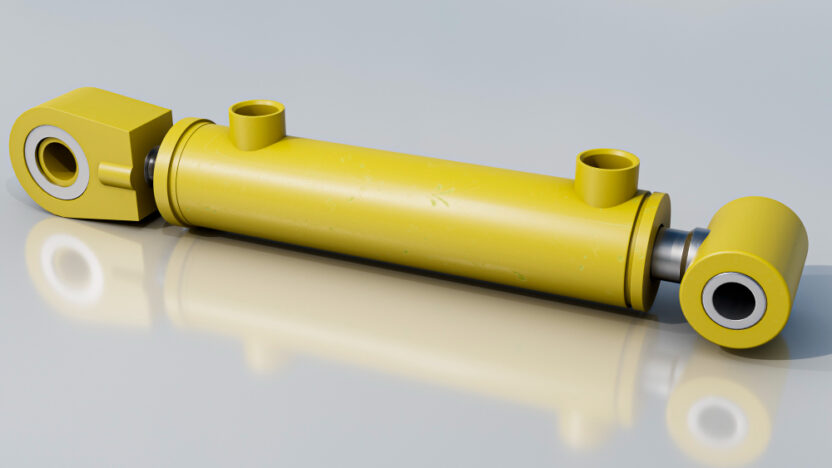When it comes to industrial automation and heavy machinery, actuators are the muscle behind the motion. Two of the most commonly used types of actuators are pneumatic cylinders and hydraulic cylinders. While they may serve similar functions—creating linear motion and force—the way they operate, their applications, and their limitations differ significantly.
So, the big question is: Can one replace the other? Let’s explore this through a practical, easy-to-understand lens and find out what suits your system best.
Understanding the Basics: Pneumatic and Hydraulic Cylinders
Before diving into comparisons, let’s take a quick look at what these cylinders are and how they work.
Pneumatic Cylinders
Pneumatic cylinders use compressed air to generate motion. The air is pressurized and released into a chamber, pushing a piston that creates linear movement. They are common in factory automation, robotics, and packaging systems where speed and cleanliness are critical.
Key Features:
- Operate using compressed air (usually 80–120 PSI)
- Fast and lightweight
- Low maintenance
- Clean and safe for many industries
Hydraulic Cylinders
Hydraulic cylinders use pressurized fluid—typically oil—to produce force. They’re commonly used in applications where high force and durability are required, such as in construction equipment, manufacturing presses, and agricultural machinery.
Key Features:
- Operate at much higher pressures (up to 5000 PSI or more)
- Deliver high force and load-bearing capacity
- Suitable for rugged environments
- More robust and heavier in design
Comparing Pneumatic and Hydraulic Cylinders
Let’s break down the major differences that define where and how each type is used—and whether they can substitute one another.
1. Force Output
This is one of the most important factors to consider.
- Hydraulic cylinders are built for power. They can move massive loads and apply strong force with precision. Think of construction machinery like excavators or heavy-duty manufacturing presses.
- Pneumatic cylinders, in contrast, are designed for lighter applications. They’re ideal for moving small parts or operating tools, but they’re not built for lifting tons of weight.
Can pneumatics replace hydraulics for high-force tasks?
Not effectively. Pneumatics simply can’t match the pressure and force levels of hydraulics.
2. Speed and Responsiveness
Pneumatics shine in this department.
- Pneumatic systems are typically faster and more responsive because air can be vented and compressed quickly. This makes them great for high-cycle, repetitive tasks.
- Hydraulic systems, while powerful, are slower due to the viscosity of the fluid and the need for more controlled movement.
Can hydraulics replace pneumatics in high-speed applications?
Not efficiently. If speed is critical, pneumatics have the edge.
3. Precision and Control
Here’s where it gets interesting.
- Hydraulic cylinders offer finer control over force and movement due to the incompressible nature of fluid. This is ideal in tasks requiring steady, precise movement (like positioning heavy parts or forming materials).
- Pneumatics, using compressible air, tend to have less precise control, especially under varying loads.
Can pneumatics replace hydraulics in precision tasks?
No, not when precise force control is necessary.
4. Cleanliness and Environmental Suitability
Pneumatics win when it comes to clean environments.
- Pneumatic cylinders are widely used in industries like food, pharmaceuticals, and electronics where cleanliness is critical. No risk of fluid leakage or contamination.
- Hydraulic cylinders, while effective in dirty and rugged environments, can pose contamination risks if the fluid leaks.
Can hydraulics replace pneumatics in clean-room settings?
Not safely. Pneumatics are the better fit for hygienic operations.
5. Maintenance and Cost
Every system has its own cost implications.
- Pneumatic systems generally have lower initial and maintenance costs. They are simpler in design, require less servicing, and use inexpensive air.
- Hydraulic systems have higher setup and maintenance costs due to fluid handling, pumps, valves, and leak management. However, they offer longer life in high-force applications.
Can pneumatics replace hydraulics to save money?
Only if the application allows it. Don’t sacrifice required force or durability for short-term savings.
So, Can One Replace the Other?
Here’s the bottom line: pneumatic and hydraulic cylinders are not universally interchangeable. Each has a niche where it thrives.
| Scenario | Recommended Cylinder |
|---|---|
| High force, heavy loads | Hydraulic Cylinder |
| Fast, repetitive operations | Pneumatic Cylinder |
| Clean environments (food/pharma) | Pneumatic Cylinder |
| Precision force control | Hydraulic Cylinder |
| Lightweight, mobile systems | Pneumatic Cylinder |
| Harsh, rugged conditions | Hydraulic Cylinder |
You can’t replace hydraulics with pneumatics if your task demands serious power. Similarly, you wouldn’t want to use hydraulics in a fast-paced, clean, and lightweight setup where pneumatics excel.
Hybrid Approaches: Best of Both Worlds?
Interestingly, some advanced systems today use a hybrid of pneumatic and hydraulic technologies. These combine the speed of pneumatics with the force of hydraulics—offering precision control and responsiveness in one package.
For instance, hydropneumatic cylinders (also known as air-over-oil systems) use compressed air to drive a hydraulic mechanism. While more complex and expensive, they’re ideal for niche applications requiring balance.
Final Thoughts
When evaluating whether to use a pneumatic or hydraulic cylinder, the answer really depends on your specific needs. Instead of asking whether one can replace the other, ask:
- What force do I need?
- How clean does my environment need to be?
- Is speed or precision more important?
- What’s my budget for setup and maintenance?
Choosing the right cylinder type is about application fit, not just convenience.
In the end, both pneumatic and hydraulic systems have stood the test of time—and when used in the right context, they’ll continue to power our industries for decades to come.


